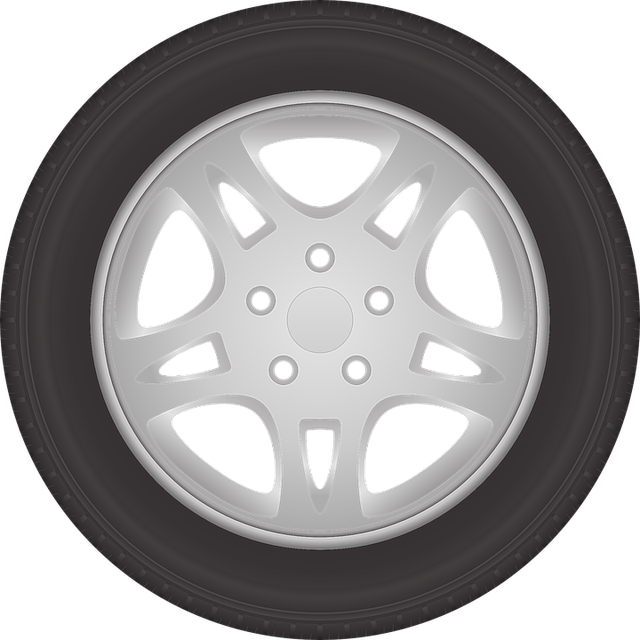Looking to register your car in California? This comprehensive guide will walk you through the process, ensuring a smooth experience. From understanding eligibility requirements to navigating the DMV VIN verification process, we’ve got you covered. We’ll break down the necessary documents, provide step-by-step instructions, and offer tips to avoid common issues. By following these steps, registering your vehicle in California becomes a breeze.
- Eligibility Requirements for Car Registration in California
- Gathering Necessary Documents for VIN Verification
- The DMV VIN Verification Process Step-by-Step
- After Completing VIN Verification: Registering Your Vehicle
- Common Issues and Tips to Streamline the Registration Process
Eligibility Requirements for Car Registration in California

To register your car in California, you must first ensure that your vehicle meets specific eligibility requirements. The state Department of Motor Vehicles (DMV) conducts a thorough process, which includes verifying the Vehicle Identification Number (VIN). This critical step involves checking the vehicle’s history and ensuring it complies with safety standards. The DMV uses advanced systems for VIN verification to cross-reference data against national databases, confirming the car’s authenticity and condition.
Additionally, your vehicle must be properly insured, and you’ll need valid documentation, such as proof of ownership, before submitting your registration application. Consider utilizing a mobile VIN inspection service or a trusted mobile vin verifier to streamline this process. These services can provide instant results and ensure a smoother experience when registering your car with the California DMV.
Gathering Necessary Documents for VIN Verification

Before you can register your car in California, you’ll need to gather several crucial documents for the DMV VIN (Vehicle Identification Number) verification process. This step is essential to ensure that your vehicle meets all legal requirements and safety standards. Key documents include the title or registration certificate from the previous state, a completed DMV form (often Form MV-52), and proof of insurance. Additionally, you’ll require a valid driver’s license or state ID card.
For a smoother process, many California residents opt for a mobile VIN verification service, allowing them to complete this step without visiting a DMV office. A mobile vin inspection or verifier can provide on-site, convenient services, ensuring your car is ready for registration in no time. This alternative method is particularly beneficial for those with busy schedules or physical limitations that make visiting the DMV challenging.
The DMV VIN Verification Process Step-by-Step

The DMV’s Vehicle Identification Number (VIN) verification process is a crucial step when registering a car in California. Here’s how it works step-by-step:
1. Schedule or Walk-in: You can either schedule an appointment for VIN verification through the California Department of Motor Vehicles (DMV) website or visit a local DMV office to conduct the inspection immediately. If opting for a walk-in, be prepared for potential wait times.
2. Gather Documents: Bring all necessary documents, including your vehicle’s registration paperwork, proof of insurance, and valid identification like a driver’s license. For historical or imported vehicles, additional documents may be required.
3. Present Your Vehicle: Once at the DMV, you’ll need to physically present your car. A trained inspector will examine the vehicle for any signs of alteration or tampering using a mobile vin verifier or other inspection tools. They’ll compare the VIN on critical components like the engine, transmission, and chassis with the one listed on the registration documents.
4. Pass/Fail Determination: After the vin inspection, the examiner will determine if your vehicle passes the verification process. If everything checks out, you’ll be issued a certificate of compliance, allowing you to proceed with registration. However, any discrepancies or signs of fraud will result in a fail, and you’ll need to resolve the issues before re-submitting for verification.
After Completing VIN Verification: Registering Your Vehicle

After successfully completing the DMV’s VIN verification process, the next step is to register your vehicle with the California Department of Motor Vehicles (DMV). This involves several straightforward procedures that ensure your car meets all necessary safety and legal standards. Once verified, you’ll need to gather essential documents, including proof of insurance, a completed registration application, and the vehicle’s title. You can opt for a mobile vin verifier or conduct a manual inspection to ensure all information is accurate before submitting these documents at your local DMV office.
The registration process involves paying associated fees and providing personal details like your name, address, and driver’s license number. Upon approval, you’ll receive a registration card and license plate, marking the official registration of your vehicle in California. It’s crucial to keep these documents updated and readily available to avoid any legal issues or penalties related to an unregistered vehicle.
Common Issues and Tips to Streamline the Registration Process

The car registration process in California can sometimes present common issues that prolong the experience for many drivers. A frequent hurdle is the DMV VIN verification, where a discrepancy or delay arises from an inaccurate vehicle identification number (VIN) match. To streamline this step, ensure all provided information is accurate and up-to-date, including the VIN, which can be easily verified using a mobile vin verifier app for instant validation.
Another tip involves planning ahead by gathering necessary documents well in advance, such as proof of insurance, registration from the previous state (if applicable), and title documents. Additionally, scheduling an appointment at your local California DMV office can reduce wait times compared to walk-in visits. Consider a vin inspection as part of your preparation to avoid any potential roadblocks during the registration process.
Registering a car in California involves understanding eligibility requirements, gathering essential documents, and successfully completing the DMV VIN verification process. By adhering to these steps and addressing common issues, you can streamline the registration process, ensuring your vehicle is legally registered and ready for California’s roads. Remember, accurate documentation and timely action are key to avoiding delays and potential penalties.
